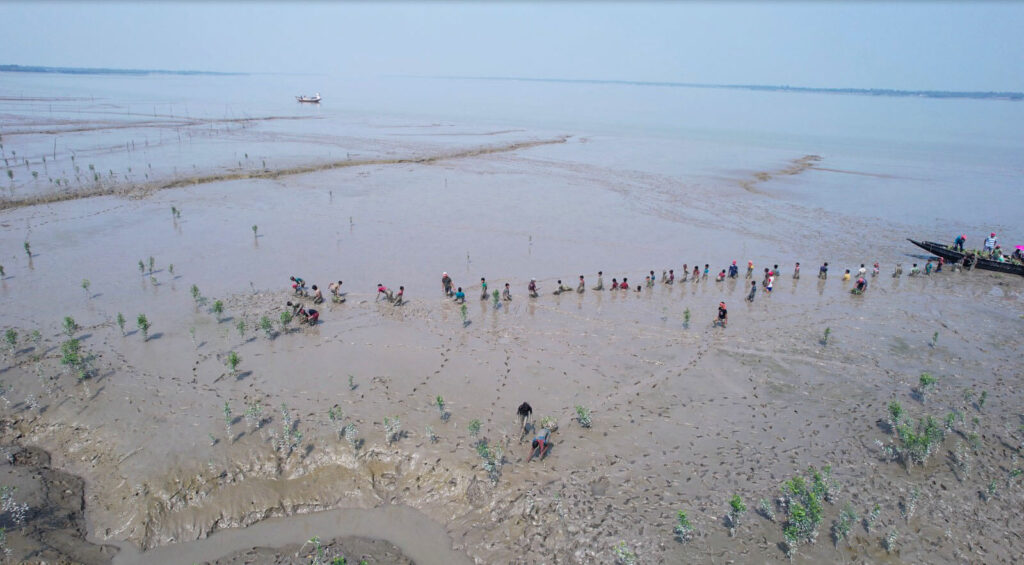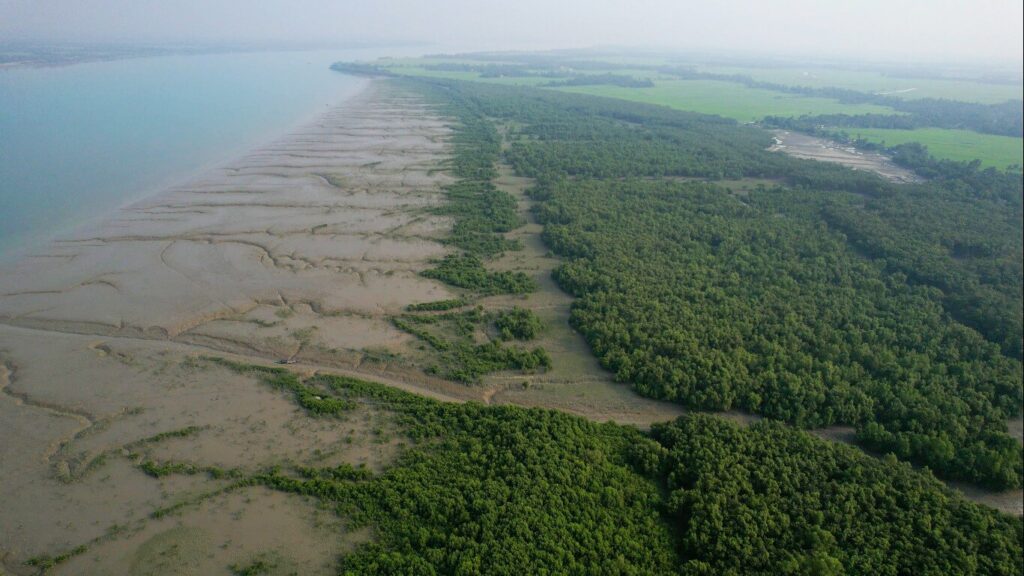The breeze in the Sundarbans carries stories of survival, salt and resilience. It is a place where the land meets the Bay of Bengal, and every tide tells a tale. But for many farmers, life here has been a long fight against the forces of nature.
When the Amphan cyclone hit in 2020, it caused havoc by destroying homes, swallowing lives, livelihoods and dreams. Trees were uprooted and farmlands had turned salty. The ponds were filled with brackish water. The farmers who once cultivated rice, vegetables and betel leaves were only left with mud and hopelessness.
Among them was Balaram Ghosh, a farmer who lived in a small village near Gosaba. His land which was once green and fertile had now turned into a barren white salty land. His child had stopped going to school and his wife had to start working as a laborer, to make the ends meet.
Balaram used to wake up every morning and then stare at his field. It felt like a wound that would never heal.
But then came a ray of hope – carried not by the tides but by the people of SankalpTaru foundation.
Trees as Lifeline
SankalpTaru foundation, a tech-enabled tree planting NGO, came to the Sunderbans with one simple goal – to bring back life to the land. They saw beyond the havoc that was caused and they saw potential.
Their team of local volunteers and agronomists assessed the soil, spoke to the farmers and understood which crops could be grown in the land. They did not plant any random tree but they planted Mangrove and fruit-bearing saplings that could grow in the saline conditions.
Guava, coconut and mango trees were planted. They were chosen very carefully to provide balance to both livelihood and land.
For Balaram and many others like him, it was not only about planting trees but it was about their dignity.
Support From SankalpTaru
In the first few months, the farmers observed skeptically. The land that had betrayed them before, they were not sure whether the saplings could survive or not.
However, SankalpTaru stayed to support the farmers. Their field team trained the farmers in organic practices, taught them how to care for the saplings and helped them protect their lands from flooding through a series of mangrove trees.
Slowly, changes started taking place. Tiny green roots started piercing the soil. Leaves started shimmering under the tropical sun. The barren field started breathing again.
Balaram remembers the first day when his mango tree sapling sprouted. It felt like his land was speaking again.
Within 2 years, his land was no longer barren. A series of fruit-bearing trees swayed gently in the coastal breeze. His family started earning again by selling coconut, guava and mango locally. His children returned to school and his wife stopped working as a laborer and started helping Balaram in the field.
The trees had rebuilt what the storms had destroyed.

Transparency and Innovation
What makes SankalpTaru’s work special is not just their plantation drives – but their transparency and innovation. Every tree planted is geo-tagged, allowing donors across the world to see its exact location, monitor its growth and witness the impact of their contribution.
For the farmers, this meant continuous support, pride and visibility. For the land, it meant consistency and care.
Each tree in the sundarbans stands as a symbol of resilience against despair and climate change.

Forest of Hope
In recent times, the villages in Sunderbans that once stood silent after the cyclone are alive again. One can hear the chatter of women drying the mangoes, the laughter of children and the gentle swishing of coconut leaves.
SankalpTaru’s tree plantations have not only brought back trees, but have brought back hope.
Farmers now talk about planting more, expanding their fields and teaching others what they have learned.
Balaram often walks through his green field during sunset, his feet sinking in the soft mud. He looks at the horizon where the mangroves meet the sea, and smiles. He thinks that his land is alive again and so is he.
Conclusion
The Sunderbans remind us that healing our planet also means healing its people. Every sapling planted here is more than just a green dot on the map. It is a promise.
A promise that no setback, no storm and no tide is stronger than human will.
As SankalpTaru continues to to plant, nurture and protect, the message is quite clear –
When we plant, we don’t just save our planet, but we give life back to those who depend on it.

